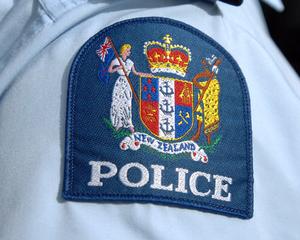In almost two years 1500 New Zealanders have been sentenced under the three strikes legislation, passed in June 2010 and modelled on the same controversial law used in California.
At the 13th International Criminal Law Congress in Queenstown on Saturday, University of Auckland Criminology senior lecturer Dr James Oleson said the New Zealand legislation was "divisive" and "pretty expansive".
In California, the legislation had led to overcrowding in state prisons, an ageing prison population and increasing costs, with the annual cost per prisoner in 2008-09 $US47,000 ($NZ56,600) or $US70,000 to incarceratean older prisoner.
Dr Oleson said more than 100,000 individuals had been sentenced under three strikes since 2004 in the United States - 41,114 of them were in California.
While some believed the harsh sentencing, which saw 25-year prison terms for second strikers and any felony count as a third strike, had reaped significant benefits and had acted as a deterrence, others reported the impact of the law was "modest, nonexistent or undetectable, or even counterproductive" and the crime rate had already been dropping before the law's introduction.
In New Zealand the Sentencing and Parole Reform Act was enacted on May 25, 2010 and became effective from June 1 that year with 40 qualifying offences, including all major violent or sexual offences with a maximum penalty of seven or more years' imprisonment.
Dr Oleson said in New Zealand the "first strike" was a formal warning and the second a final warning or imprisonment without parole.
The third strike meant the court must impose the maximum penalty and order it be served without parole unless that would be "manifestly unjust", Dr Oleson said.
"It's a high hurdle to clear.
"John Pratt [author of a 2006 article] wrote for our reputation of being a progressive, egalitarian, forward-thinking South Pacific Island paradise, there's a shadowy side to this country.
"We have a real appetite for punishment."
At July 31, 2011, 574 first strikes had been issued, including "three with two first strikes, which says something about the difficulties of working out the kinks".
Only nine of the 40 qualifying offences had led to warnings - robbery/aggravated robbery (198); sexual assault (177); serious assault (138); aggravated burglary (26); abduction and kidnapping (16); manslaughter (11); murder (3); other acts intended to cause injury (3); and attempted murder (2).
Data showed 92.7% of those who had received first strikes after 14 months were male and the majority were aged between 18 and 25.
At May 2012, 1493 first strikes and six second strikes had been issued - more than double that of July 2011.
Most of those sentenced under the three strikes law were aged between 18 and 24 (45%) and 88.5% were male, 7.6% female and "3.9% unknown".
"We have a growing acquiescence and a growing [appreciation] for three strikes in this country," Dr Oleson said.
"Month to month to month we're becoming more comfortable with the imposition of three strikes."
However, Dr Oleson said New Zealand was beginning to follow the trends seen in many countries with the three strikes legislation - disproportionate rates of warnings imposed on minorities.
In New Zealand there were "more Maori [strikers] than any other ethnicity" but at this stage the statistics were matched by prison population data, which showed 50% of inmates were Maori.
"It's bad, but it's not bad enough ... to have to do something about it."






